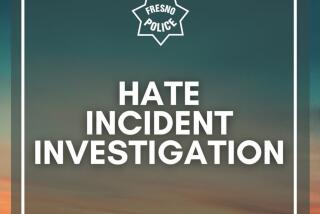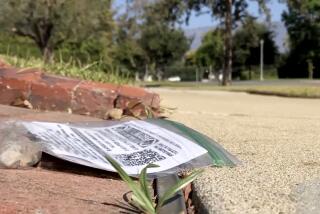Raving Over Fliers
- Share via
The history of the flier in America goes back to Thomas Payne (“Common Sense”) and beyond, in the years when the printing press was a political force. The flier evolved into newspapers, pamphlets and tools of propaganda. By the 1960s, fliers also took on the graphic influence of Haight-Ashbury psychedelia and were used as scaled-down posters to advertise rock concerts.
Today, they are the international medium of underground dance parties known as raves. Computer graphics have added a cyber-aesthetic to the neo-psychedelia of ecstasy-fueled rave culture. Everyone has a computer, and every little high school party crew wants to throw a party, so the well-distributed, attractively designed flier (check your local record store) has become all-important in ravers’ efforts to sort the good events from the bad.
Most importantly, fliers tell party-goers who the promoters are and what the deejay line-up will be for the night. On top of that, fliers must capture through graphics the theme of a rave (often childhood themes--from “The Wizard of Oz” to Mickey Mouse). The competition has bred pop art for the ‘90s as graphic artists use increasingly expensive devices--boxes of candy, vinyl records and all-important bottles of water--to get their message across: Rave on.
More to Read
The biggest entertainment stories
Get our big stories about Hollywood, film, television, music, arts, culture and more right in your inbox as soon as they publish.
You may occasionally receive promotional content from the Los Angeles Times.










